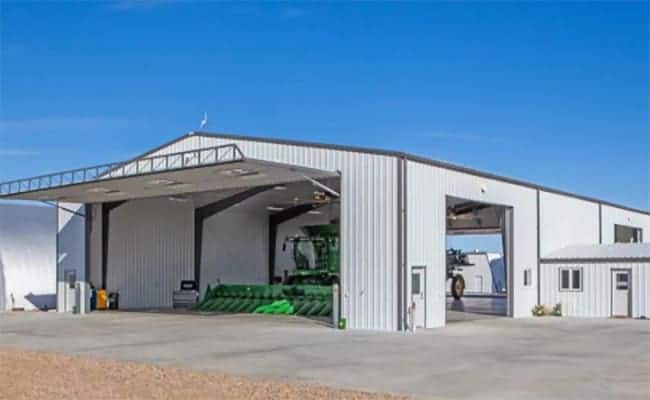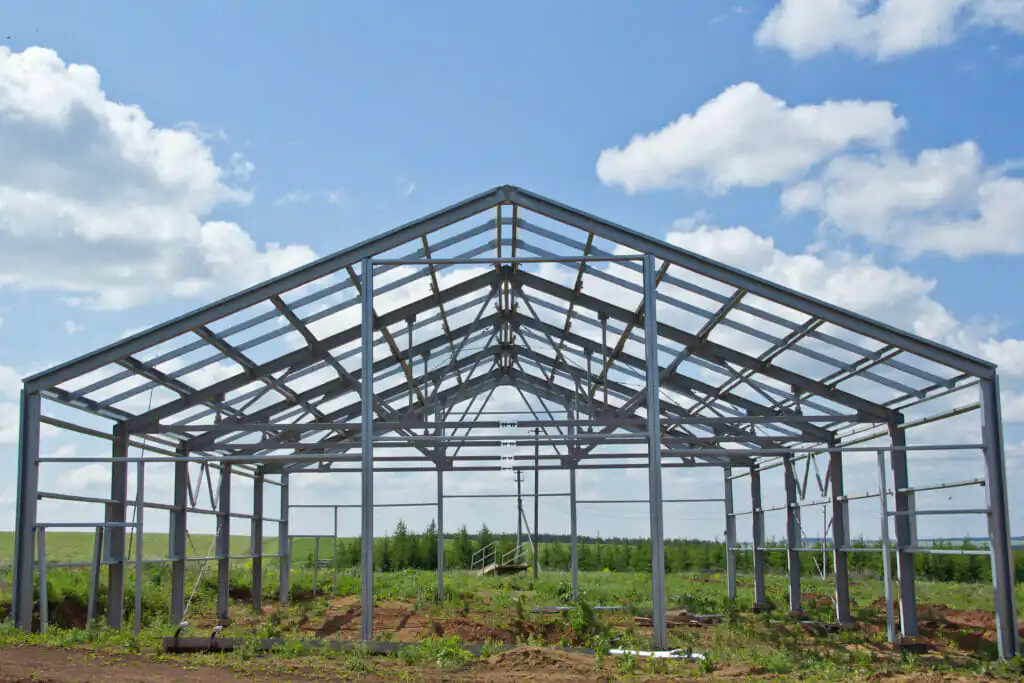Steel Structure Buildings in Extreme Weather: Robust Solutions
Learn about the advantages of steel structure buildings in facing extreme weather conditions. Heat-resistant, corrosion-resistant, and earthquake-resistant.
Steel structure buildings have proven to be a robust and adaptive solution in facing extreme weather conditions. This article reviews the advantages of steel structures in overcoming harsh environmental challenges, including high temperatures, corrosive environments, and seismic activity.
Focusing on design innovations and the latest material technologies, we will explore how steel structure buildings not only survive but also perform optimally in various extreme weather conditions. Discover why steel structures are becoming the primary choice for construction projects in disaster-prone areas and challenging environments.
1. Overview of Steel Structure Buildings
Steel structure buildings have long been recognized as one of the most reliable and versatile construction materials in the world. The superiority of steel in the construction industry is undeniable, especially when faced with the challenges of extreme weather conditions. Steel offers a unique combination of strength, durability, and flexibility that makes it ideal for various building applications.
One of the main advantages of steel structure buildings is their high strength-to-weight ratio. This means buildings can be constructed taller and wider using less material compared to traditional construction materials like concrete. Additionally, the homogeneous nature of steel allows for more accurate prediction of structural behavior, which is crucial in designing buildings for extreme conditions.
Design flexibility is another advantage of steel structure buildings. Architects and engineers can create complex and innovative forms that are difficult to achieve with other materials. This adaptability is invaluable when designing buildings that must withstand extreme loads from wind, snow, or earthquakes.
From a sustainability perspective, steel also excels. Steel can be recycled without losing its strength, making it an environmentally friendly choice. Moreover, the precise fabrication process of steel reduces construction waste and allows for faster assembly on-site, minimizing environmental disruption during construction.
However, the use of steel structures also requires special considerations. Protection against corrosion and fire are critical aspects that must be addressed in design and maintenance. Nevertheless, with the development of modern coating technologies and protection techniques, these challenges can be effectively overcome.

2. Steel Structure Buildings in Extreme Environments
Steel structure buildings have proven their resilience in facing various extreme environmental conditions. Let’s examine in more depth how steel structures overcome three main challenges: high temperatures, corrosive environments, and seismic activity.
2.1 High Temperatures
In areas with extremely high temperatures, such as deserts or tropical regions, steel structure buildings face unique challenges. Thermal expansion becomes a primary concern, as steel can experience significant dimensional changes due to temperature fluctuations.
To address this, engineers use various strategies:
- Flexible Joint Design: Joints that allow thermal movement without causing excessive stress on the structure.
- Reflective Coatings: The use of paints or coatings that reflect heat, reducing heat absorption by the steel structure.
- Passive Cooling Systems: Implementation of designs that maximize natural ventilation and reduce heat load on the structure.
- Advanced Insulation Materials: Use of modern insulation materials that help maintain stable internal building temperatures.
Successful examples of applying these technologies can be seen in skyscrapers in Dubai, which are able to withstand and function optimally despite outside temperatures reaching 50°C.
2.2 Corrosive Environments
Corrosive environments, such as coastal areas or industrial zones, present major challenges for steel structures. Corrosion can significantly reduce the strength and lifespan of structures if not properly addressed.
Some solutions implemented include:
- Stainless Steel: The use of special steel alloys that are more resistant to corrosion.
- Galvanization: The process of coating steel with zinc to provide cathodic protection.
- Advanced Coating Systems: The use of epoxy, polyurethane, or zinc-based coatings that provide long-term protection.
- Cathodic Protection: Electrochemical techniques that prevent corrosion by altering the electrical potential of the steel surface.
- Regular Monitoring and Maintenance: Strict inspection and maintenance programs to detect and address corrosion early.
Large bridges in marine environments, such as the Golden Gate Bridge in San Francisco, are examples of how steel structures can withstand highly corrosive environments for decades with the application of proper protection strategies.
2.3 Seismic Activity
Earthquake-prone areas require a special approach in steel structure design to ensure the safety and integrity of buildings during seismic events.
Some key strategies include:
- Moment Resisting Frame Systems: Designs that allow the structure to move and absorb energy during earthquakes.
- Diagonal Bracing: Addition of diagonal elements to increase the lateral stiffness of the structure.
- Base Isolation: Use of base isolation systems that separate the structure from ground movements.
- Seismic Dampers: Devices that absorb vibration energy, reducing the impact of earthquakes on the structure.
- Non-linear Dynamic Analysis: Use of advanced computer simulations to predict structural behavior during earthquakes.
Skyscrapers in Tokyo and San Francisco are examples of how steel structures can be designed to withstand major earthquakes. For instance, the Transamerica Pyramid in San Francisco uses an innovative bracing system that allowed it to survive the large Loma Prieta earthquake in 1989 without significant structural damage.

3. Conclusion
Steel structure buildings have proven themselves to be highly effective solutions in facing extreme weather conditions and severe environmental challenges. Through innovations in design, use of advanced materials, and application of the latest technologies, steel structures can reliably overcome high temperatures, corrosive environments, and seismic activity.
The excellence of steel structures lies not only in their strength and durability but also in their flexibility and adaptability. The ability to be adapted to various extreme conditions makes steel the primary choice for construction projects in geographically and climatologically challenging areas.
With the continuous development of technology and our understanding of material behavior, the future of steel structure buildings in extreme conditions looks very promising. Ongoing innovation in design, materials, and construction techniques will continue to improve the resilience and efficiency of steel structures, ensuring that these buildings will continue to be the backbone of modern infrastructure worldwide, even in the most challenging environments.


Post Comment